BANDRA WORLI SEA LINK
- Consists of twin continuous concrete box girder bridge sections for traffic in each direction.
- Each bridge section except at the cable – stayed portion is supported on piers typically spaced at 50 meters.
- Each section is meant for four lanes of traffic complete with concrete barriers and service side walks on one side.
- The bridge alignment is defined with vertical and horizontal curves.

PROJECT LOCATION
- The project starts from the Interchange at Mahim (i.e. intersection of Western Express Highway and Swami Vivekanand road at Bandra) and connects to Worli at Worli end with overall length of 5.6 km for the entire project.
- A cloverleaf interchange at Mahim intersection and a flyover at the Lovegrove intersection have been proposed as part of this project to enhance the faster and safe traffic dispersal.
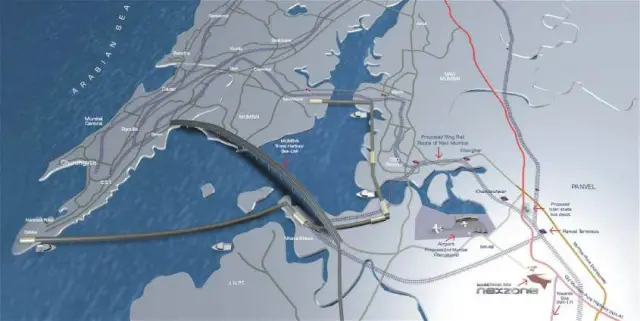
TECHNICAL INFORMATION
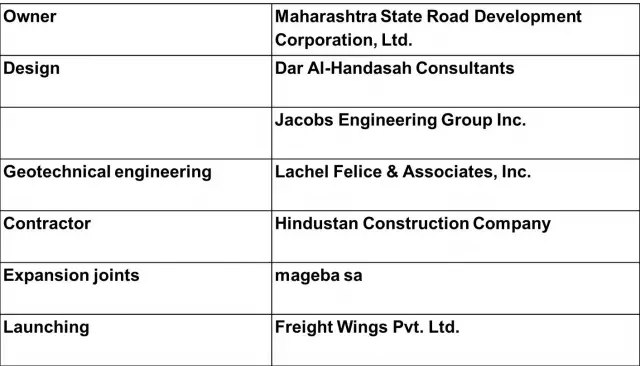
THE HIGHLIGHTS
- The true engineering marvel developed on the Arabian Sea.
- The bridge has 8 lanes, with two dedicated for the buses.
- The total weight of the sea link is equivalent to 50,000 African elephants.
- Steel cable has been used for supporting the various structures of bridge. Steel wire used in the bridge is equivalent to the total circumference of the earth.
- The height of the Bandra-Worli sea link is 63 times the height of Qutub Minar
- In all 90,000 tons of cement has been used which could easily construct five buildings of 10 storeys each.
- The total power consumption of the sea link is 1000KW or 1MW per day.
- The sea link has ultra modern automatic systems for monitoring the traffic, surveillance, communications, instrumentation, emergency support etc.
- The bridge also has its own in-house diesel generator to meet to critical emergency power requirements for monitoring and surveillance and communication equipments.
THE LINK BRIDGE LAYOUT IS CATEGORIZED INTO THREE DIFFERENT PARTS: –
- Part 1 – The north end approach structure mainly with precast (PC) segmental construction
- Part 2 – The Cable Stayed Bridge at Bandra channel is with 50m – 250m – 250m – 50m span arrangement and the Cable Stayed Bridge at Worli channel is with 50m – 50m – 150m – 50m – 50m span arrangement
- Part 3 – The south end approach structure mainly with precast segmental construction
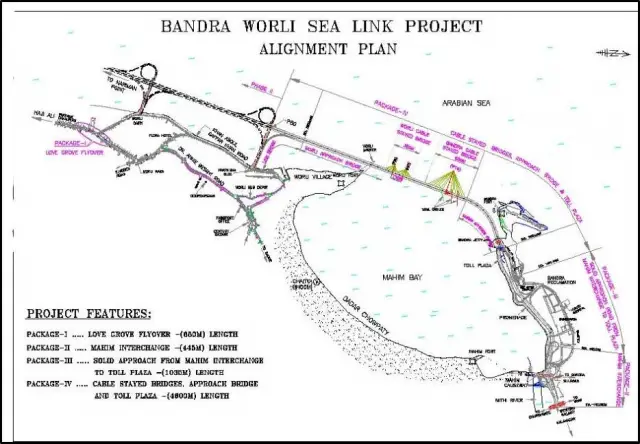
PART – I NORTH END APPROACH STRUCTURE
- arranged in units of typically six continuous spans of 50 meters each.
- Expansion joints are provided at ends of each unit.
- Provision for access ramp to connect to Bandstand road. Span arrangement for this structure provides for cast in-situ spans.
- designed in accordance with IRC codes.
- Specifications conform to the IRC standard with supplementary specifications covering special items.
- The sub – structure consists of 1.5 meters diameter drilled piles with pile caps & some of the piers near Worli end are directly socketed into the rock.
- Bridge bearing supports are of Disc & POT type. Longitudinal and lateral support at various locations along the unit are provided to limit displacements.
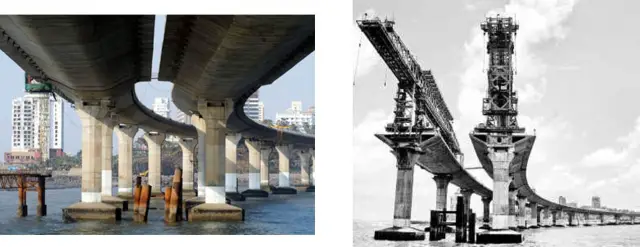
- Utilizing the concept of precast, post – tensioned, twin segmented concrete box girder sections.
- An overhead gantry truss crane with self – launching capability
- The end segments adjacent to the pier is short segments “cast – in – situ”. Geometrical adjustments are made by this segment before primary continuous tendons are stressed.
- Segment types are defined by the changes in the web thickness and type of diaphragms cast in cell.
- The segment weights vary from 75 tons to 120 tons per segment.
- The segment length varies from 1500 mm to 3100 mm.
- Deck post tensioning is performed at the completion of the erection of each bridge unit.
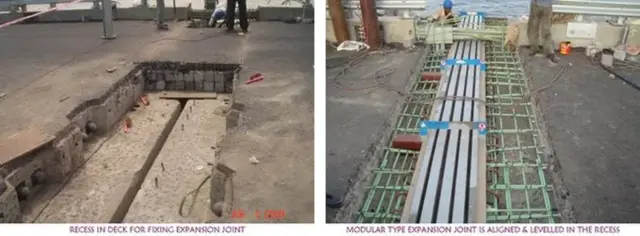
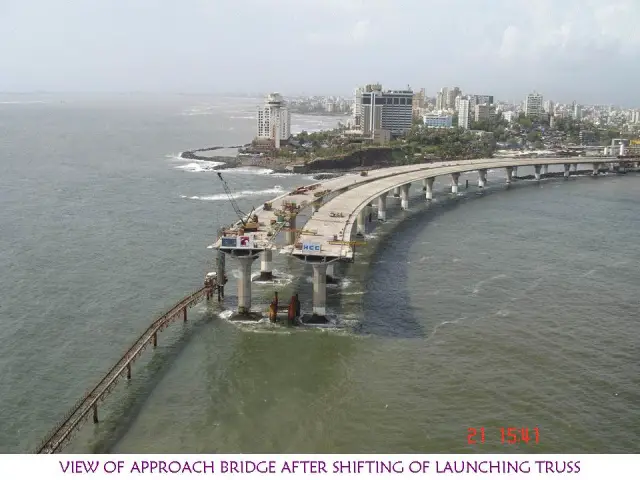
PART- II CABLE STAYED BRIDGE
- The cable – stayed portion is 600 meters in overall length between expansion joints
- consists of two 250 meters cable supported main spans flanked by 50 meters conventional approach spans.
- A centre tower with an overall height of 128 meters above pile cap level supports the superstructure by means of four planes of stay cables in a semi – fan arrangement.
- Cable spacing is 6.0 meters along the bridge deck.
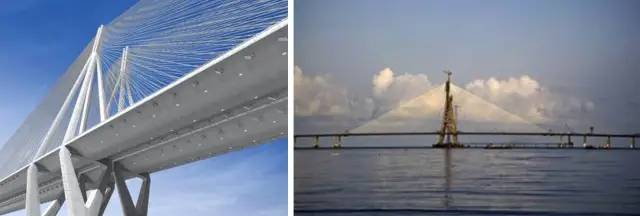
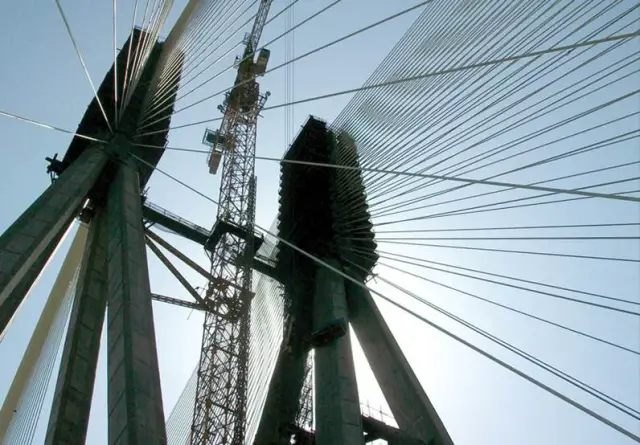
view of tower
- The superstructure comprises of twin precast concrete box girders with a fish belly cross sectional shape, identical to the approaches.
- A typical precast segment length is 3.0 meters with the heaviest superstructure segment approaching 120 tons.
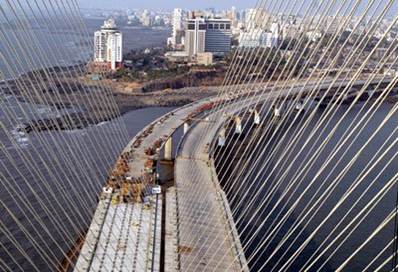
- Balanced cantilever construction is envisioned for erecting the cable supported superstructure as compared to span – by – span construction for the approaches.
- For every 2nd segment, cable anchorages are provided.
- A total of about 264 stay cables required for the cable – stayed spans at Bandra channel with cable lengths varying from approximately 85 meters minimum to nearly 250 meters maximum.
- The tower is cast – in – situ reinforced concrete using the climbing form method of construction.
- The overall tower configuration is an inverted “Y” shape with the inclined legs oriented along the axis of the bridge.
- Tower cable anchorage’s are achieved by use of formed pockets and transverse and longitudinal bar post – tensioning is provided in the tower head to resist local cable forces.
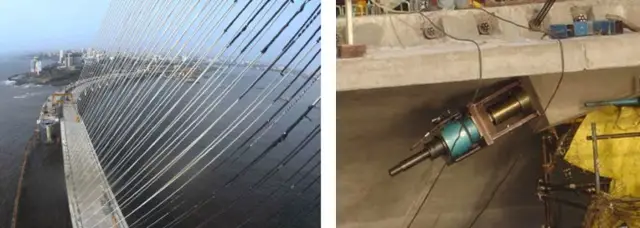
- The foundations for the main tower are comprised of 2 meters drilled shafts with estimated length of 25 meters.
- Cofferdam and tremie seal construction is envisioned in order to construct the 6 meters deep foundation in the dry.
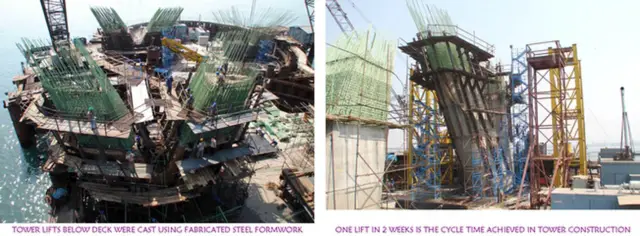
PART – III SOUTH END APPROACH STRUCTURE
- similar to the North end approach structure in construction methodology with span by span match cast concrete box girder sections.
- Similar to the north end approach detailed, access ramps are provided for connection to the western freeway i.e. extension upto Nariman Point.
- A total of about 160 stay cables required for the cable – stayed spans at Worli channel with cable lengths varying from approximately 30 meters minimum to nearly 80 meters maximum.
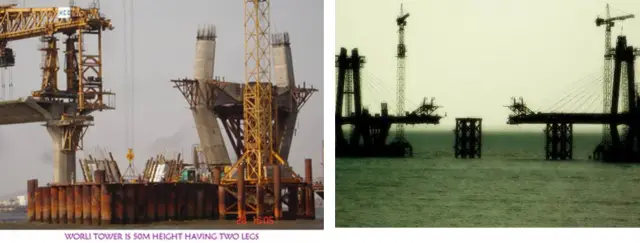
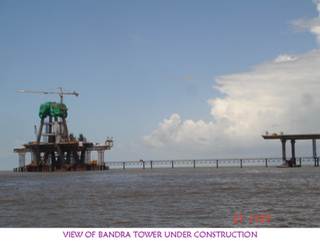
- The tower is cast – in – situ reinforced concrete using the climbing form method of construction.
- “I” shape tower configuration with the inclined legs. Tower cable anchorage’s are achieved by use of formed pockets and transverse and longitudinal bar post – tensioning is provided in the tower head to resist local cable forces.

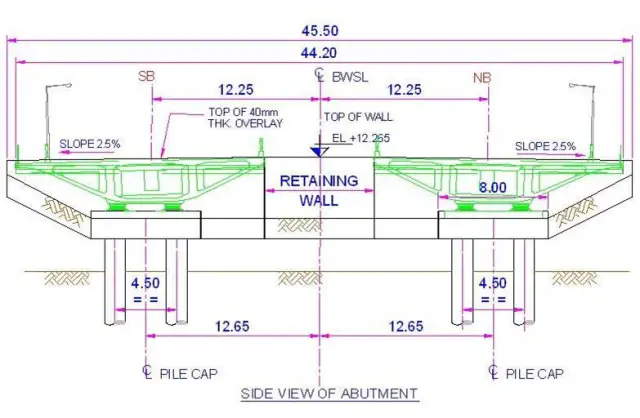
SECTION
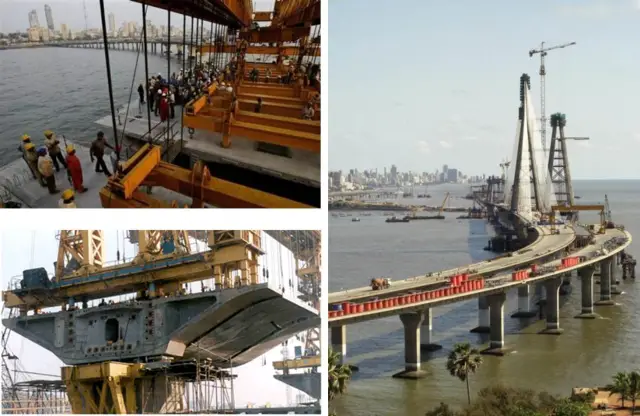
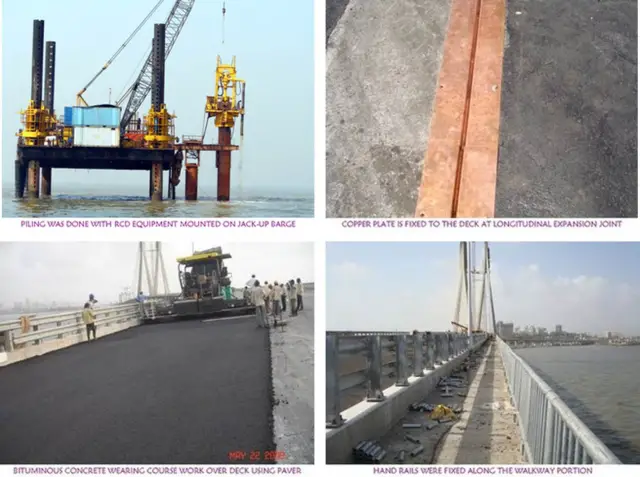
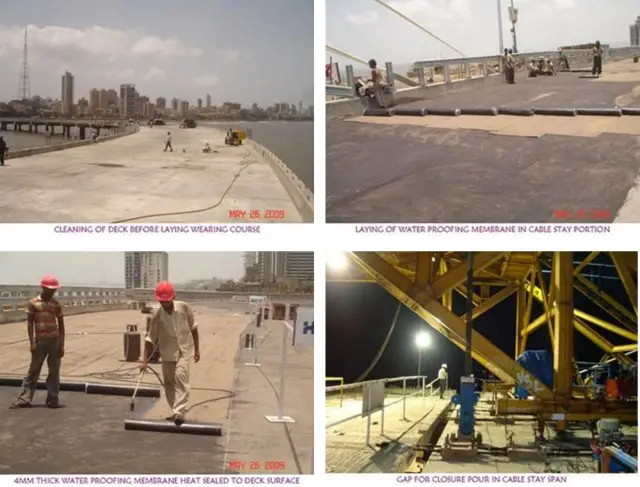
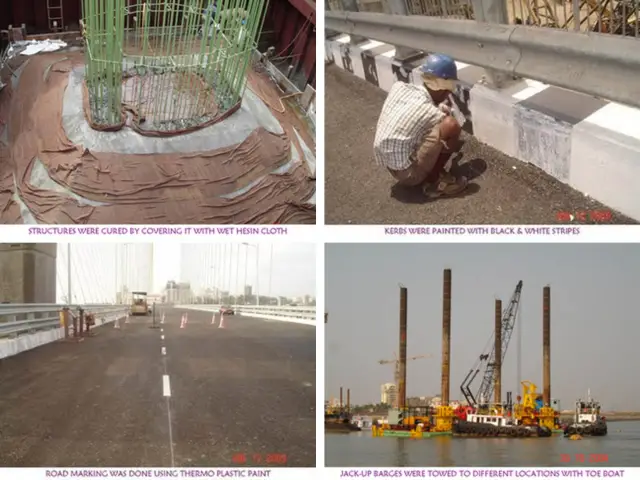
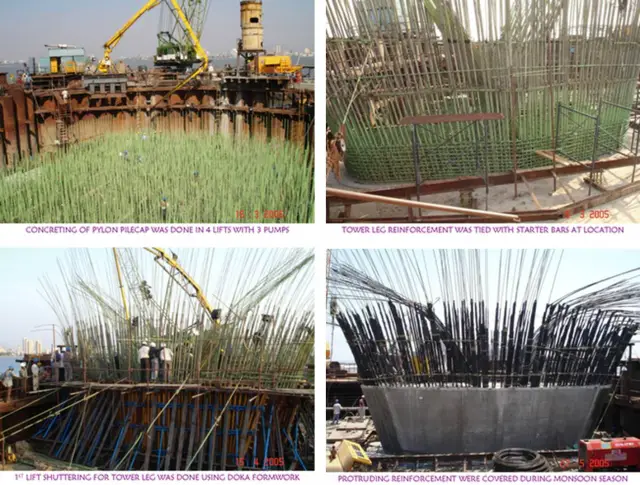
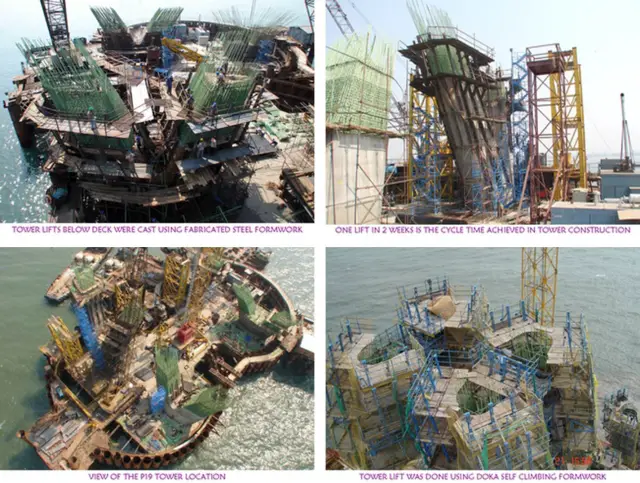
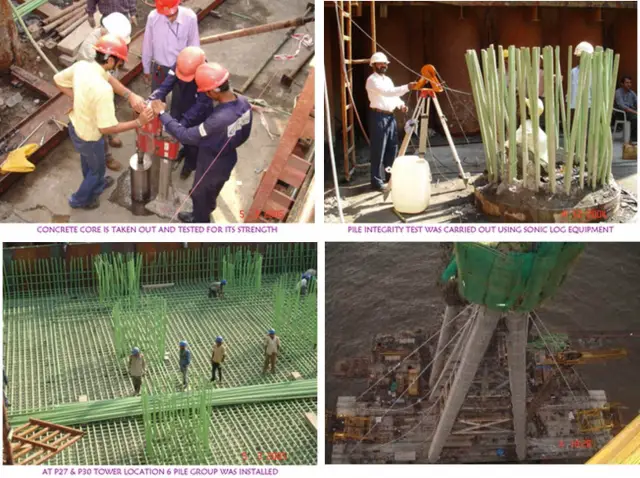
QUALITY ASSURANCE
- Following are some of the main features incorporated into the project to enhance the performance of the bridge:
- High performance concrete (grade M60 with micro silica slurry) are utilized for the structure.
- 40 mm thick high performance overlay are provided over the pre-stressed deck to function monolithic with the deck.
- Coal tar epoxy painting are provided below the high tide level splash zone for the sub – structure.
- A “State – of – the – art” electric system for the ITS.
BENEFITS OF BANDRA-WORLI SEA LINK
1) It is estimated that the sea link will help saving Rs. 10 million annually due to congestion in traffic and length of the previous route and shorter new route.
2) While earlier it used to take 40 minutes for drive between Bandra and Worli, now the distance can be covered in mere 8 minutes resulting in large savings in time.
3) The sea link has resulted in much easier driving with reduction in mental stress and improvement in the quality of life.
4) There would be reduction in accidents due to shorter distance and wider roads.
5) Extensive landscaping along the approaches and promenade enhances the surrounding environment.
CRITICISM
- The Bandra-Worli link is a short stretch that does not even cover the western shore,
- As envisaged two decades ago. It took ages because of design changes and payment disputes. The trans-harbour bridge creek has been bid for twice yet not awarded to anybody.
- The entry to the bridge from mahim causeway to the bridge is approx a little more than 1.5 kms and the exit to old passport office is another 1 km. So the total length of the bridge from Mahim to Worli is more than 7.1 kms, plus a toll fee of Rs 50/- on one time use. The total length from Mahim to Worli is 5.2 kms.
- So they make a new road for us which is more expensive to travel then the old one and longer too. The amount of time taken from Mahim to Worli is usually 25 mins in the morning.
- While, The time taken to enter the BWSL and get out at worli seaface is 15 mins because of the toll etc.. The T junction at Worli is senseless and will cause a lot of trouble once more people start using the Sea link.

FIRST OF ALL CONGRATULATIONS
FIRST OF ALL CONGRATULATIONS TO YOUR WORK AND YOUR DETERMINANT TEAM SIR I WANT TO GAIN SOME FUNDAMENTAL KNOWLEDGE SO I NEED YOUR HELP EITHER ONLINE OR PERSONALLY
I AM PURSUING CIVIL ENGINEERING (3YEAR) FROM B.I.T MEERUT